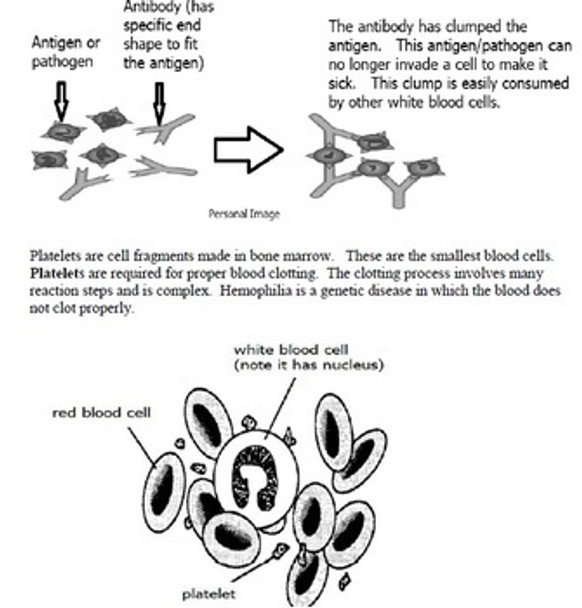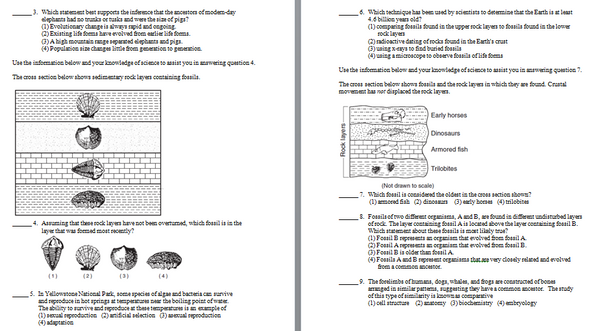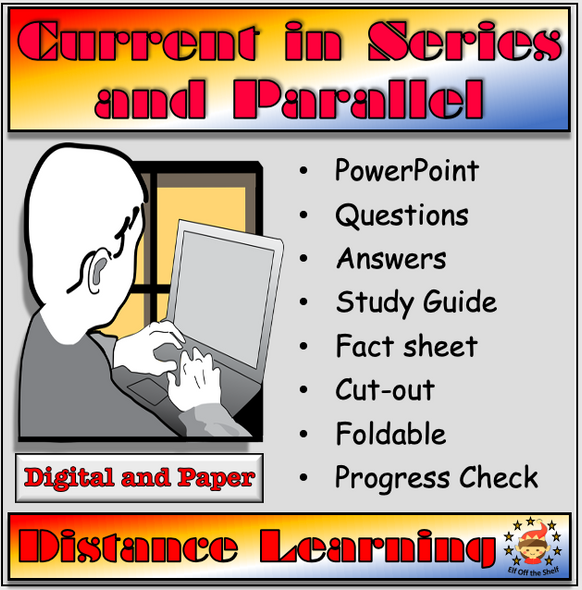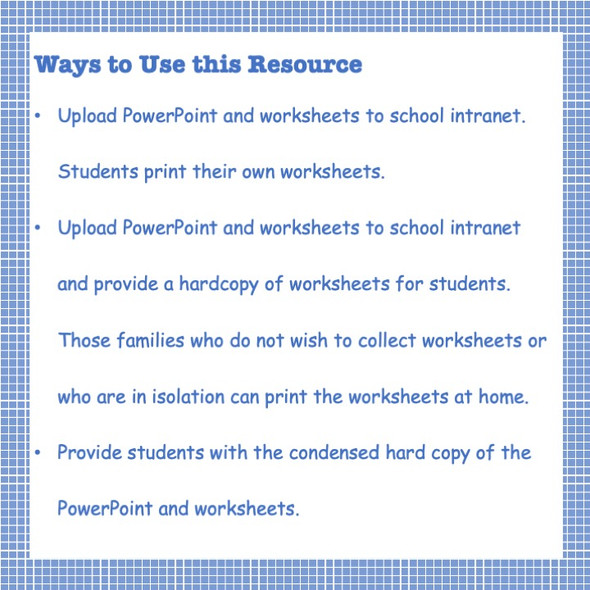Description
The Circulation Learning Package for Middle School Science introduces students to basic concepts involving human circulation and immunity. The contents of the package includes reading and writing activities, lab activities, completion notes with an associated PowerPoint, as well as 5 bell ringer activities with answers in PowerPoint format. The 50 pages of student activities will facilitate student engagement and understanding. All materials are highly editable to meet your needs. With the exception of the PowerPoints, all activities are in both word and pdf format. Answer keys are included for all items.
Specifically these activities will:
- provide structured reading and writing activities to reinforce learning
- present many relevant diagrams and illustrations
- provide students with a data analysis or graphing experience
- provide students with an opportunity to analyze data
- provides structured notes to facilitate the delivery of content
- aligns to the Next Generation Science Standards (NGSS) and Common Core standards
- provides opportunities to demonstrate understanding of key concepts
Specific Package Contents
-- Unit Standards and Learning Goals (includes NGSS and Common Core) (2 pp.)
-- Heart Rate Lab Activity (6 pp.)
-- Circulation Reading and Writing Activity (19 pp.)
-- Human Circulation Completion Notes (8 pp.)
-- PowerPoint to Accompany the Human Circulation Completion Notes (68 slides)
-- Circulation Bell ringers PowerPoint with answers (8 slides) (5 different bell ringer activities)
-- Blood Typing and Heredity Lab for Middle School Science (17 pp.)
More information can be acquired about the Blood Typing and Heredity Lab by clicking on the link above.
NGSS Learning Standard
Students who demonstrate understanding can:
MS-LS1-3. Use argument supported by evidence for how the body is a system of interacting subsystems composed of groups of cells.
MS-LS3-2. Develop and use a model to describe why asexual reproduction results in offspring with identical genetic information and sexual reproduction results in offspring with genetic variation.
Common Core State Standards Connections:
ELA/Literacy
RST.6-8.1 Cite specific textual evidence to support analysis of science and technical texts.
RI.6.8 Trace and evaluate the argument and specific claims in a text, distinguishing claims that are supported by reasons and evidence from claims that are not.
RST.6-8.4 Determine the meaning of symbols, key terms, and other domain-specific words and phrases as they are used in a specific scientific or technical context relevant to grades 6-8 texts and topics.
RST.6-8.7 Integrate quantitative or technical information expressed in words in a text with a version of that information expressed visually.
WHST.6-8.1 Write arguments focused on discipline content.
Mathematics
MP.4 Model with mathematics.
6.SP.B.5 Summarize numerical data sets in relation to their context.
Learning Goals
Upon the completion of this unit the student will be able to:
1. state three functions of the circulatory system.
2. describe the location and function of atria, ventricles, valves, and the septum in the human heart.
3. explain the statement "the heart is a double pump".
4. explain the difference between deoxygenated and oxygenated blood, and explain where in the heart and body each is found.
5. discuss the basic structure and function of arteries, veins, and capillaries.
6. list four functions of the blood.
7. describe the composition of the blood.
8. state the major function, size, and relative numbers of the following; red blood cells, white blood cells and platelets.
9. distinguish between the functions of phagocytes and lymphocytes.
10. define the terms antigen and antibody.
11. discuss some major symptoms and causes of the following cardiovascular disorders; hemophilia, hypertension, heart attack, stroke, and leukemia.
12. discuss the antigen-antibody reactions involved in the A-B-O blood groups.
13. describe what may occur if an individual is incorrectly matched for a blood transfusion.
14. describe the procedure for typing blood for the A-B-O blood groups and explain how the results are interpreted.
15. use a punnett square to predict the phenotypes of the offspring in an A-B-O blood cross.
16. recognize that in the offspring formed as a result of sexual reproduction, half of the genetic information comes from the father and half of the genetic information comes from the mother.
Terms of Use
Purchase of the product is for classroom use by the purchaser only. It is a violation for individuals, schools, and districts to redistribute or sell this item to other individuals.
This work is licensed under a Creative Commons Attribution-NonCommercial-ShareAlike 4.0 International License.


























